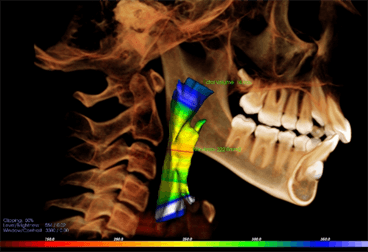Early Treatment & Pediatric Dental
When is the best time to begin orthodontics?
The American Association of Orthodontists recommends that children see an orthodontist as early as age seven. At this point the orthodontist will evaluate whether your child will need orthodontic treatment. Early treatment typically begins around age eight. The goal of early treatment is to correct the growth of the jaw and certain bite problems, such as underbite. Early treatment also helps to make room for permanent teeth to come in properly, lessening the chance of extractions in the future.
How to tell if your child may need early orthodontic treatment:
- Early or late loss of baby teeth (your child should typically start losing teeth around age five, and will have all permanent teeth around age 13)
- Difficulty chewing and/or biting
- Mouth breathing
- Your child continues sucking his or her thumb after age five
- Speech impediments
- Protruding teeth (the top teeth and the bottom teeth extend away from each other)
- Teeth that don’t come together in a normal manner or even at all
- Shifting of the jaw when your child opens or closes his or her mouth (crossbites)
- Crowded front teeth around age seven or eight
What are the benefits of early orthodontic evaluation?
Early evaluation provides both timely detection of problems and greater opportunity for more effective treatment. Prudent intervention guides growth and development, preventing serious problems later. When orthodontic intervention is not necessary, an orthodontist can carefully monitor growth and development and begin treatment when it is ideal.
Some of the most direct results of interceptive treatment are:
- Creating room for crowded, erupting teeth
- Creating facial symmetry through influencing jaw growth
- Reducing the risk of trauma to protruding front teeth
- Preserving space for unerupted teeth
- Reducing the need for tooth removal
- Reducing treatment time with braces
Why is age seven considered the optimal time for screening?
By the age of seven, the first adult molars erupt, establishing the back bite. During this time, an orthodontist can evaluate front-to-back and side-to-side tooth relationships. For example, the presence of erupting incisors can indicate possible overbite, open bite, crowding, or gummy smiles. Timely screening increases the chances for an incredible smile. With our new iCAT Cone Beam 3D Imaging machine, we can now not only screen the teeth, but also evaluate any airway issues such as sleep apnea, enlarged tonsils and/or adenoids, etc. Dr Falsafi then works hand-in-hand with an ENT specialist to determine appropriate treatments for patients.
Why should malocclusions be treated?
Orthodontics is not merely for improving the aesthetics of the smile; orthodontic treatment improves bad bites, or malocclusions. Malocclusions occur as a result of tooth or jaw misalignment. Malocclusions affect the way you smile, chew, clean your teeth, or feel about your smile. According to studies by the American Association of Orthodontists, untreated malocclusions can result in a variety of problems:
- Crowded teeth are more difficult to properly brush and floss, which may contribute to tooth decay and/or gum disease
- Protruding teeth are more susceptible to accidental chipping
- Crossbites can result in unfavorable growth and uneven tooth wear
- Openbites can result in tongue-thrusting habits and speech impediments
Ultimately, orthodontics does more than make a pretty smile – it creates a healthier you.


